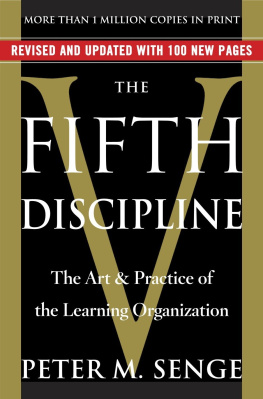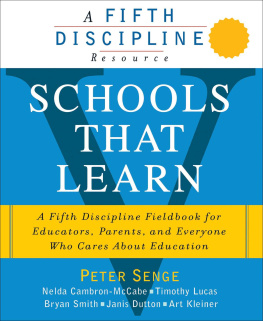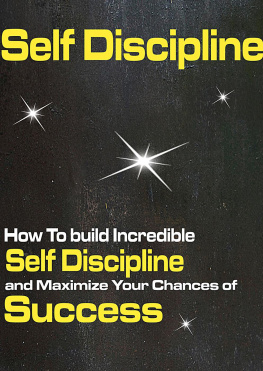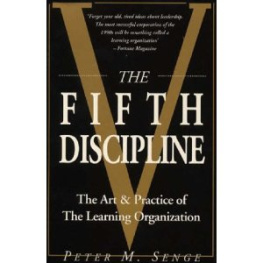Peter M. Senge - The Fifth Discipline: The Art & Practice of The Learning Organization
Here you can read online Peter M. Senge - The Fifth Discipline: The Art & Practice of The Learning Organization full text of the book (entire story) in english for free. Download pdf and epub, get meaning, cover and reviews about this ebook. year: 2006, publisher: Crown Business, genre: Business. Description of the work, (preface) as well as reviews are available. Best literature library LitArk.com created for fans of good reading and offers a wide selection of genres:
Romance novel
Science fiction
Adventure
Detective
Science
History
Home and family
Prose
Art
Politics
Computer
Non-fiction
Religion
Business
Children
Humor
Choose a favorite category and find really read worthwhile books. Enjoy immersion in the world of imagination, feel the emotions of the characters or learn something new for yourself, make an fascinating discovery.
- Book:The Fifth Discipline: The Art & Practice of The Learning Organization
- Author:
- Publisher:Crown Business
- Genre:
- Year:2006
- Rating:5 / 5
- Favourites:Add to favourites
- Your mark:
The Fifth Discipline: The Art & Practice of The Learning Organization: summary, description and annotation
We offer to read an annotation, description, summary or preface (depends on what the author of the book "The Fifth Discipline: The Art & Practice of The Learning Organization" wrote himself). If you haven't found the necessary information about the book — write in the comments, we will try to find it.
This revised edition of Peter Senges bestselling classic,The Fifth Discipline, is based on fifteen years of experience in putting the books ideas into practice. As Senge makes clear, in the long run the only sustainable competitive advantage is your organizations ability to learn faster than the competition. The leadership stories in the book demonstrate the many ways that the core ideas inThe Fifth Discipline, many of which seemed radical when first published in 1990, have become deeply integrated into peoples ways of seeing the world and their managerial practices.
InThe Fifth Discipline, Senge describes how companies can rid themselves of the learning disabilities that threaten their productivity and success by adopting the strategies of learning organizationsones in which new and expansive patterns of thinking are nurtured, collective aspiration is set free, and people are continually learning how to create results they truly desire.
The updated and revised Currency edition of this business classic contains over one hundred pages of new material based on interviews with dozens of practitioners at companies like BP, Unilever, Intel, Ford, HP, Saudi Aramco, and organizations like Roca, Oxfam, and The World Bank. It features a new Foreword about the success Peter Senge has achieved with learning organizations since the books inception, as well as new chapters on Impetus (getting started), Strategies, Leaders New Work, Systems Citizens, and Frontiers for the Future.
Mastering the disciplines Senge outlines in the book will:
Reignite the spark of genuine learning driven by people focused on what truly matters to them
Bridge teamwork into macro-creativity
Free you of confining assumptions and mindsets
Teach you to see the forestandthe trees
End the struggle between work and personal time
Peter M. Senge: author's other books
Who wrote The Fifth Discipline: The Art & Practice of The Learning Organization? Find out the surname, the name of the author of the book and a list of all author's works by series.







